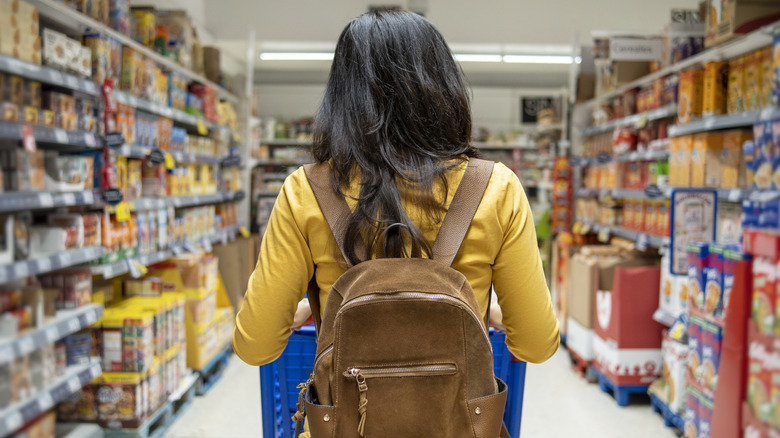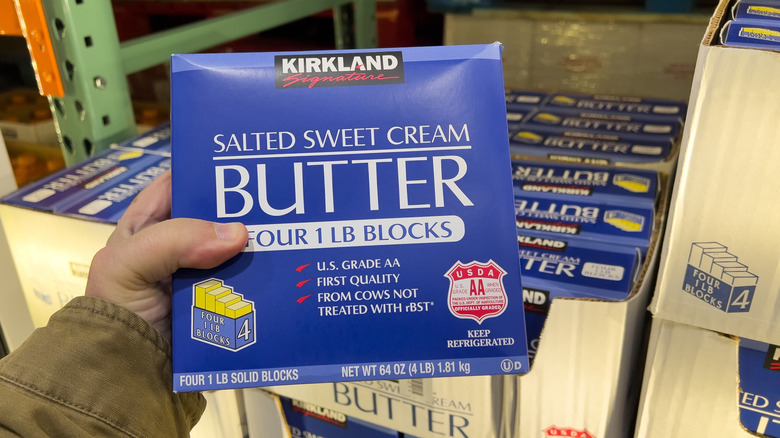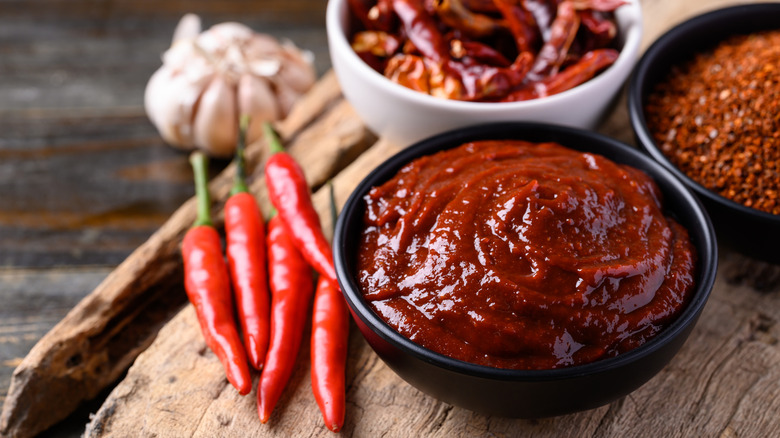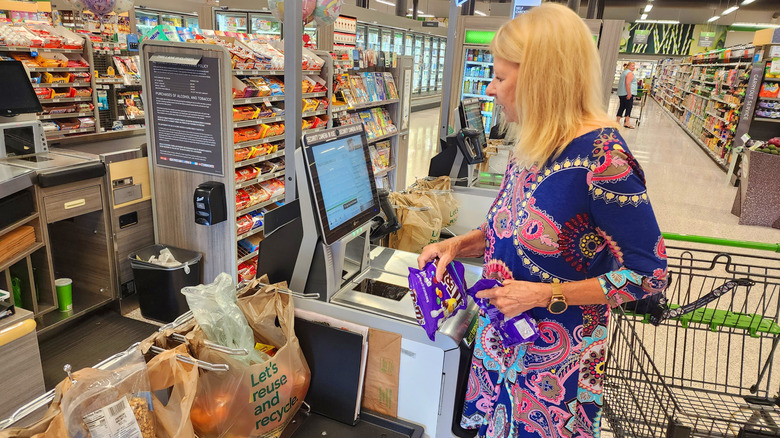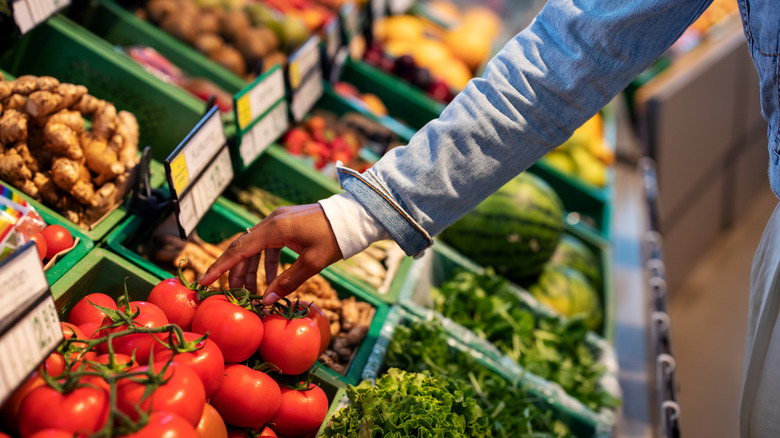4 Grocery Store Trends You Won't Be Able To Ignore In 2025
The grocery store concept as we know it today got its start in 1916 with the opening of Piggly Wiggly, which was the first store that allowed customers to shop for their own items. Since that time, grocery stores have gone through quite a few changes and advancements, including the advent of the supermarket (which contained all the items a person might need in one place), discounts in the form of coupons, and innovative technology like self-checkouts.
These days, grocery stores play a crucial role in the lives of individuals and families. And while the concept is relatively well-established, that doesn't mean that retailers have ceased innovating. Some of the top grocery trends expected for 2025 include the increasing popularity of private labels, greater emphasis on international foods, the continued growth of innovative technology, and plans to meet consumer preferences when it comes to sustainability. While there's no telling what the future might hold for the grocery industry, these trends will be undeniable at your preferred shopping locations (if they haven't made an impact already).
Private labels may usurp name brands in popularity
The reason that you'll almost never see name brands at Aldi has to do with the chain's preference for private-label goods. Private label brands are created by a third-party manufacturer to be sold by specific retailers, and big chains like Aldi, Costco, and Walmart all participate in the practice. While so-called "generic" brands once held a bad reputation, private labels actually allow for more control over the quality of the products found in stores and offer shoppers goods for lower prices since fees for advertising and packaging don't apply.
The successful proliferation of private label brands in 2024 is likely to drive the trend higher in 2025. Grocery stores have a great reason to push their private labels, as the costs for producing these items are often lower, which means more money goes into the pockets of retailers. And with private brands, retailers can innovate by tweaking formulas and incorporating ingredients that you can't easily find in name-brand products.
Greater selection of international flavors and ingredients
Younger demographics apparently have a real zest for experimenting with new foods and drinks, and retailers are invested in matching their daring attitudes in 2025. In particular, foods and ingredients with international flair are projected to be big this year, which means that all age groups will have a wider selection of tasty products to choose from as grocery stores cater to thrill-seeking consumers.
Take gochujang, a spicy Korean condiment consisting of fermented soybeans and red pepper flakes, among other ingredients. The condiment is becoming increasingly popular among Americans thanks to its multi-faceted spicy, savory, and mildly sweet flavor. Ube is another rising star when it comes to tempting international foods. This purple-hued yam hails from the Philippines and is known for its pleasantly sweet yet nutty flavor. Trader Joe's shoppers may already be familiar with ube thanks to the chain's myriad products featuring the distinctive yam, including the massively popular ube ice cream. On the seasoning front, Tajín, which is a combination of dried chiles and dehydrated lime, is moving beyond Mexican cuisine and popping up in pantries worldwide. Of course, this is just a small sampling of all the international flavors grocery stores will feature in the coming year.
More self-checkouts and automation
Anyone who's stepped foot in a grocery store in the last few years will have likely seen an increasing number of self-checkouts. Retailers are leaning hard into mechanization because automated processes for inventory and other operations boost accuracy and reduce costs for retailers. By allowing customers to scan their groceries, stores can cut costs related to labor, and hopefully pass these savings on to customers. However, consumers are also enthused about new technology, as it often results in a faster, more convenient experience. Surveys have shown that the majority of consumers would rather use self-checkouts than cash registers with real, live workers.
As for whether shoppers can ever expect a completely autonomous experience at grocery stores, some available tech uses sensors that automatically scan products retrieved by customers and remotely charge automated payments for a "frictionless" shopping experience. Amazon's Just Walk Out concept offers the technology, but implementation has hit a few roadblocks due to the complexity of retail environments. Despite these challenges, consumers can expect technology to play a bigger role in their shopping experiences in 2025.
Focus on locally sourced, sustainable foods
According to data shared by NIQ, a whopping 95% of consumers state that they actively take measures to support sustainability in their daily lives. Grocery chains have acknowledged this demand for sustainable practices, including Aldi, which has enacted sustainability plans like reducing food waste and dialing back its carbon footprint. The drive for sustainability is so strong that many consumers admit that they would pay more for products that come from sustainable sources.
Sustainable practices are the ethical choice and are ultimately good for everyone due to their environmental benefits. Additionally, businesses that make it a point to advertise their plans for enhancing sustainability will have an advantage, as they can better appeal to consumers who prioritize these practices when deciding where to spend their money. An emphasis on sustainability can also increase brand loyalty, which puts retailers in a better position to maintain market longevity. When it comes to the grocery trends anticipated to make an impact in 2025, it appears that both retailers and consumers have something to look forward to.
